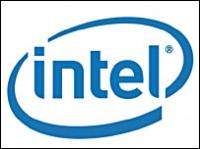Moore's Law Marches on at Intel

Intel President and CEO Paul Otellini today displayed a silicon wafer containing the world's first working chips built on 22nm process technology. The 22nm test circuits include both SRAM memory as well as logic circuits to be used in future Intel microprocessors.
"At Intel, Moore's Law is alive and thriving," said Otellini. "We've begun production of the world's first 32nm microprocessor, which is also the first high-performance processor to integrate graphics with the CPU. At the same time, we're already moving ahead with development of our 22nm manufacturing technology and have built working chips that will pave the way for production of still more powerful and more capable processors."
The 22nm wafer displayed by Otellini is made up of individual die containing 364 million bits of SRAM memory and has more than 2.9 billion transistors packed into an area the size of a fingernail. The chips contain the smallest SRAM cell used in working circuits ever reported at .092 square microns. The devices rely on a third-generation high-k metal gate transistor technology for improved performance and lower leakage power.
By continuing to lead in manufacturing technology Intel is able to innovate and integrate new features and functions into its processors. Intel's 32nm process is now certified and Westmere processor wafers are moving through the factory in support of planned fourth quarter revenue production. Following the move to 32nm Intel will subsequently introduce Sandy Bridge, Intel's next new microarchitecture. Sandy Bridge will feature a sixth generation graphics core on the same die as the processor core and includes AVX instructions for floating point, media, and processor intensive software.


















